May 15, 2025 | 15:29 GMT +7
May 15, 2025 | 15:29 GMT +7
Hotline: 0913.378.918
May 15, 2025 | 15:29 GMT +7
Hotline: 0913.378.918
In recent years, carbon credits have gained significant attention from various perspectives, with some viewing it as a lucrative opportunity. But what exactly are carbon credits and how are they used?
A carbon credit is a certificate representing the reduction of one metric ton of carbon dioxide (CO2) or an equivalent amount of another greenhouse gas (CO2eq). One ton of CO2eq equates to one carbon credit. CO2eq is a unit of measurement used in the carbon market or credit market. According to the Environmental Protection Law of 2020, carbon credits are commercially tradable certificates that grant the right to emit a specific amount of CO2 or equivalent gases. Essentially, carbon credits function as licenses, allowing the holder to emit a certain quantity of greenhouse gases, including CO2, methane (CH4), or nitrous oxide (N2O).
Every business or production facility has a set limit on the amount of greenhouse gas emissions it can release into the environment. If emissions exceed this limit, the facility must purchase additional carbon credits to comply with environmental regulations. Conversely, the facility can sell its surplus carbon credits to other entities if emissions are below the limit.
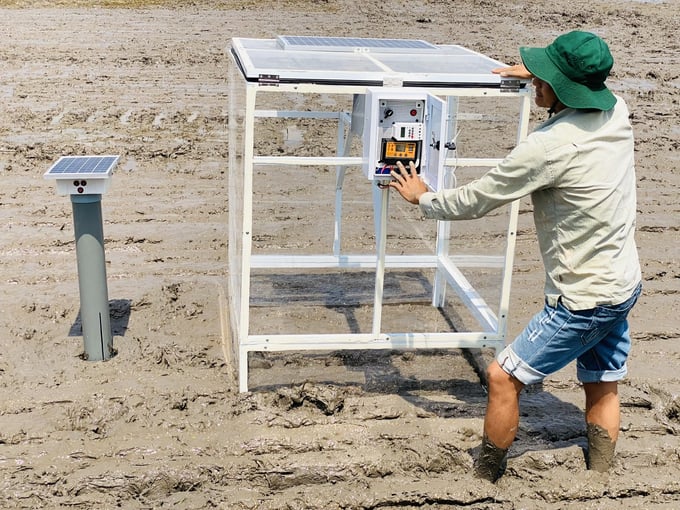
Installing an emission reduction measurement system in the Mekong Delta. Photo: Le Hoang Vu.
The carbon market is a platform where carbon credits are bought, sold, and traded among companies, organizations, or countries. This market serves as a mechanism to incentivize the reduction of greenhouse gas emissions and support the transition to a carbon-neutral economy. There are currently two types of carbon markets: the compliance carbon market and the voluntary carbon market. The compliance carbon market arises from commitments made under the United Nations Framework Convention on Climate Change (UNFCCC), which obligates member countries to adhere to specific regulations. On the other hand, the voluntary carbon market involves the issuance, purchase, and sale of carbon credits on a voluntary basis among organizations, companies, or countries. Additionally, carbon credits can be traded on specialized exchanges.
In the carbon market, two types of commodities are traded. The first type, GHG emission quotas, are allocated by the government, allowing businesses to emit a specified amount of greenhouse gases within their quota. If a business needs to emit more than its quota, it must purchase additional quotas from other businesses. These quotas are often expensive, reaching up to 100 euros per ton. The second type of commodity is voluntary carbon credits. When businesses invest in activities that reduce emissions, such as afforestation, regulatory agencies can approve and verify these reductions, creating carbon credits. Because these credits are voluntary, their prices are much lower, typically ranging from 1 to 25 USD per ton, depending on the technology used and the level of investment.
To meet international commitments to achieving net zero emissions by 2050 and reducing methane emissions by 30% by 2030 compared to 2020, the Vietnamese government has issued Decree No. 06/2022/ND-CP. This decree outlines regulations for reducing GHG emissions and protecting the ozone layer, with a roadmap to operationalize the carbon market by 2028.
This development presents an opportunity for low-emission entities to participate in carbon credit trading by implementing GHG reduction solutions. However, it also poses a significant challenge for high-emission entities, which must report their annual emissions and rigorously adhere to reduction plans, necessitating substantial technological investments. So, what must businesses do to achieve carbon credits?
Especially in agricultural production, is this really an opportunity? How can carbon credits be optimally created? Carbon credits represent the amount of CO2 reduced or eliminated through measures to reduce GHG emissions and store carbon. To achieve carbon credits, attention must be given to the following factors: GHG emission reduction and carbon storage activities.
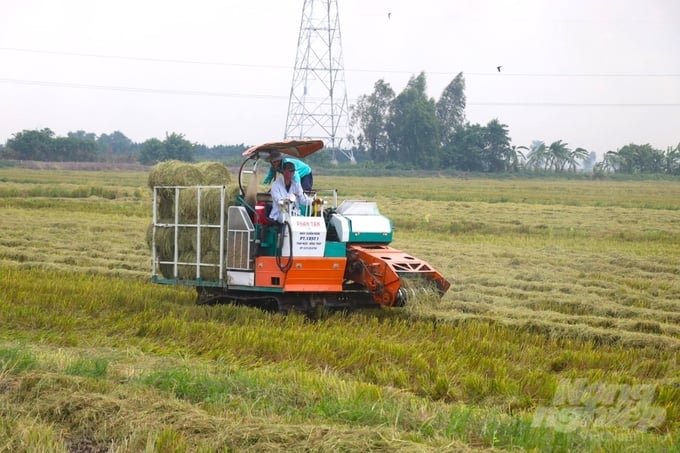
To achieve carbon credits, attention must be given to the following factors: GHG emission reduction and carbon storage activities. Photo: Kim Anh.
According to the GHG inventory results for the agriculture and rural development sector, in 2014, the agriculture sector emitted 89 million tons of CO2 equivalent (CO2eq) per year. Rice production was the largest contributor, emitting 44 million tons of CO2eq annually. Agricultural land followed with 23 million tons of CO2eq emissions, primarily from nitrogen fertilization and organic fertilizers. Ruminant digestion and livestock manure management also contributed significantly, emitting 11 million tons and 9 million tons of CO2eq, respectively. Thus, the four major sources of emissions in the agricultural sector are rice production, agricultural land, rumen digestion, and livestock manure management.
However, if we consider the entire production chain, there are additional emissions from the energy used for machinery (e.g., tilling, direct seeding/transplanting, weeding, fertilizing, harvesting, processing). These emissions can be calculated based on the regulations regarding the scope of the calculation.
By analyzing the sources of emissions, we can identify which sources and production stages need emission reductions and determine the potential reduction amounts. Generally, emission sources are categorized into three main groups: energy, production materials, and farming activities. Within each group, smaller emission sources can be targeted for formalized emission reduction activities, which are clearly recognizable.
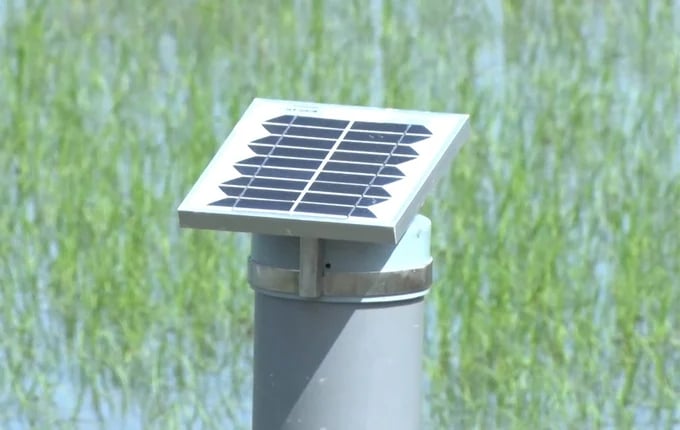
By analyzing the sources of emissions, we can identify which sources and production stages need emission reductions and determine the potential reduction amounts.
For any unit of land or type of production, various stages exist with different emission rates. Emission reduction solutions can be applied individually or in combination to achieve the highest possible reduction. For instance, in a rice production site in the Mekong Delta, baseline emissions for cultivating two rice crops with fresh straw and regular flooding are about 13 tons CO2e/ha/year.
If rice cultivation continues with the implementation of alternating wet and dry irrigation, emissions can be reduced to 7.15 tons CO2e/ha/year. However, due to saltwater intrusion and ineffective rice cultivation, if one rice crop is replaced with shrimp farming, emissions can further decrease to 6.5 tons CO2e/ha/year.
Given the higher market prices for shrimp and organically grown rice, this conversion can significantly reduce GHG emissions and increase profits. In scenarios where water scarcity necessitates switching to vegetable cultivation, if acidic soils require fruit tree planting, or in flooded or swampy areas where lotus cultivation is feasible, emissions are greatly reduced compared to the traditional model of growing two rice crops.
However, selecting emission reduction solutions must be based on appropriate local conditions to be effective. Not every area can switch crops, as land suitability for new crops is limited. For example, rice and shrimp farming are viable only in low-lying areas with saltwater intrusion, while vegetable farming is suitable for regions with favorable topography, good drainage, and light soil composition, and particularly where market access is available.
The high-quality, low-emission rice farming model also presents a comprehensive solution applicable to most rice-growing areas in the Mekong Delta. This model can significantly reduce emissions and maximize the region's export benefits. Therefore, applying emission reduction measures to participate in the carbon market requires optimal planning and preparation grounded in scientific research and investment.

High-quality, low-emission rice farming model also presents a comprehensive solution applicable to most rice-growing areas in the Mekong Delta.
When implementing GHG emission reduction solutions, it is mandatory to measure, report, and verify the amount of emission reduction to determine how much GHG a production unit can reduce over a specific period.
This requirement is clearly stipulated in Article 6 of the 2022 Paris Agreement and in Vietnam’s Government Decree 06 on reducing GHG emissions and protecting the ozone layer. These regulations emphasize the importance of choosing a high-potential emission reduction solution and an appropriate baseline scenario. For example, consider rice cultivation with three water regimes during the production season, as illustrated in Figure 3. The GHG emissions from regularly flooded rice cultivation are the highest.
If the baseline level involves regular flooding, and the method of mid-season water withdrawal is successfully applied, emissions can be reduced by 29%. If multiple mid-season water withdrawals (alternating dry and wet periods) are applied, emissions can be reduced by 45%.
However, if the baseline scenario already includes mid-season water withdrawal, switching to multiple water withdrawals can only reduce emissions by an additional 16%. Conversely, continuing with single mid-season water withdrawal does not provide any further reduction.
Similarly, if alternating wet and dry (AWD) irrigation is already in practice, reapplying this method does not count as emission reduction since the emission levels remain unchanged. Therefore, to reduce GHG emissions significantly and generate numerous carbon credits, selecting an emission reduction solution that significantly differs from the baseline level or has a high potential for emission reduction is essential.
For instance, farmers need to accurately assess the emission reduction potential of their production practices to make informed investment decisions. This includes understanding the carbon storage capacity of certain types of forests or perennial trees and comparing the stored carbon against the baseline levels.
By doing so, they can choose solutions that maximize GHG emission reductions and align with their production conditions, ensuring both environmental and economic benefits.
Just as with irrigation methods, farmers need to accurately assess the emission reduction potential of their production practices in other cases to make informed investment decisions. For example, the carbon storage capacity of certain types of forests or perennial trees must be compared with the baseline.
In afforestation or the planting of perennial trees on non-forest land, the amount of carbon stored will be substantial (as the baseline is “0”). However, for existing forests or areas with perennial trees, measures to enhance these trees' growth rate or density can increase carbon storage. Without such measures, the potential for increased carbon storage may be negligible.
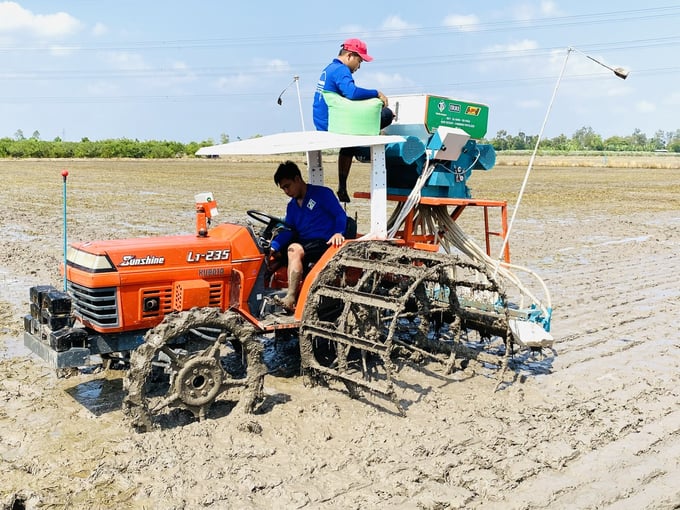
Direct seeding for fields participating in cultivating 1 million hectares of high-quality, low-emission rice in the Mekong Delta. Photo: Le Hoang Vu.
To create one carbon credit or one Certified Emission Reduction (CER), business owners or farmers must implement one or more solutions to reduce GHG emissions compared to their usual practices. In agriculture, this might include afforestation versus leaving the land bare, renovating and restoring forests to enhance productivity, alternating wet and dry irrigation for rice versus frequent flooding or mid-crop dewatering, converting ineffective rice cultivation to shrimp farming, improving livestock feed, better management of livestock manure, recycling livestock waste and crop by-products, and applying emission-reducing technologies.
To apply these solutions effectively, investment in technology, infrastructure construction, and system operation is required. For example, to reduce methane emissions from rice farming, substantial investment is needed from the state and the people to build precise irrigation and water regulation systems. Similarly, waste treatment plants are essential for managing livestock waste and crop by-products.
Not only that, but these projects also require significant funds for operation and maintenance, as agricultural infrastructure often degrades quickly. The cost to reduce 1 ton of CO2e, or to generate 1 CER, is calculated by taking the total investment over the project's lifetime, adding maintenance and operational costs, and considering productivity risks. This total is then offset by the benefits and co-benefits and divided by the total amount of CO2e reduced, resulting in what is known as the abatement cost or marginal abatement cost (MAC).
If we only consider the carbon price, it may seem like an opportunity to profit. However, in reality, this price typically only covers the costs that the state, businesses, and people have already incurred. For example, when a farmer implements alternating wet and dry irrigation on their field and achieves a certain amount of CER, this success is not solely due to the farmer’s efforts but also to the entire irrigation infrastructure supporting the field. Consequently, investments may not always be fully accounted for, and the carbon price might be lower than its actual value.
Furthermore, the carbon market features two types of carbon commodities: quota exchanges and carbon credits. Quota exchanges usually command higher prices but are restricted to units that have been allocated quotas. In contrast, carbon credits, traded voluntarily, tend to have much lower prices than quotas.
From a global perspective, reducing emissions and combating climate change is a collective responsibility shared by all citizens. Nationally, the Vietnamese Government is committed to achieving net zero carbon emissions by 2030 and adhering to the UNFCCC’s National GHG Emissions Reduction Plan, which consists of two parts: domestically determined contributions and those supported internationally.
Implementing GHG reduction obligations as determined by the country is a legal requirement and must be prioritized. Additionally, for solutions necessitating international support, we can seek assistance from global partners in technology and other areas such as communication and capacity building. First and foremost, we need to develop a clear understanding of carbon and the carbon market to achieve both our collective and individual goals.
Translated by Quynh Chi
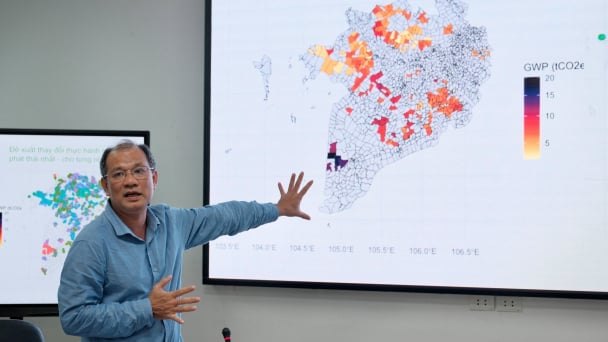
(VAN) Data from 10,000 farming households will help professionalize production organization and support the implementation of the One Million Hectares Program for High-Quality, Low-Emission Rice Cultivation.
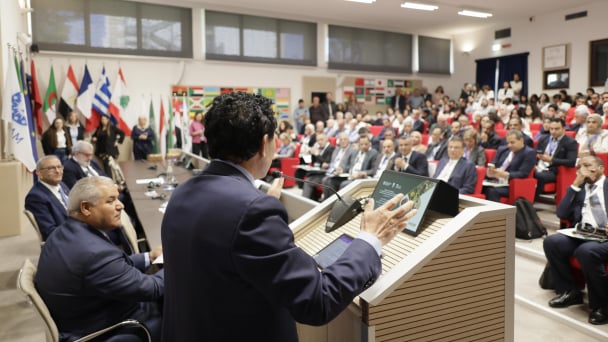
(VAN) FAO Director-General QU Dongyu marks International Day of Plant Health at NENA conference.
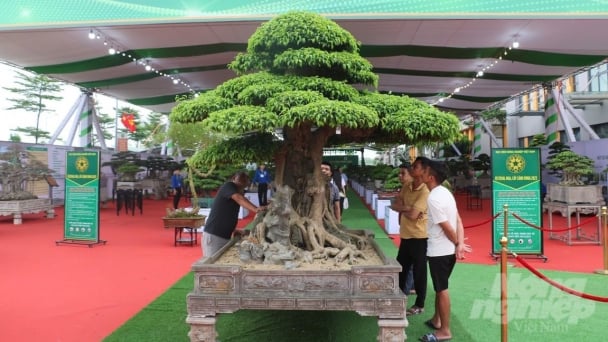
(VAN) Deputy Minister of Agriculture and Environment Hoang Trung affirmed that floriculture and ornamental plants are a growing industry that receives significant global attention.

(VAN) The three staple crops dominating modern diets – corn, rice and wheat – are familiar to Americans. However, fourth place is held by a dark horse: cassava.
/2025/05/10/4037-3-223011_495.jpg)
(VAN) Remote sensing technology is becoming an indispensable tool in monitoring resources, developing modern agriculture, and protecting the environment in Vietnam.
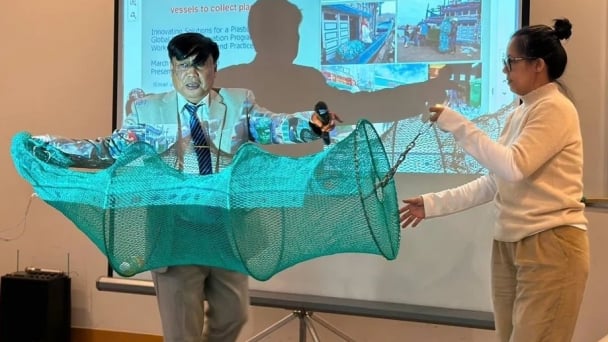
(VAN) The trash bag used on fishing vessels can withstand rough sea conditions, including level 8 to level 10 winds and waves. Notably, it can be hung anywhere on the boat.
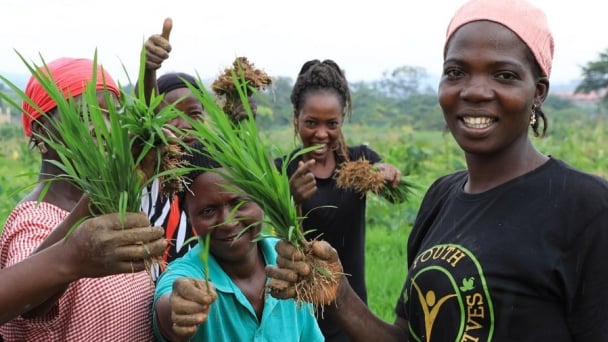
(VAN) African leaders launched the Kampala Declaration on Building Resilient and Sustainable Agrifood Systems in Africa, marking a bold step toward transforming the continent's agriculture.